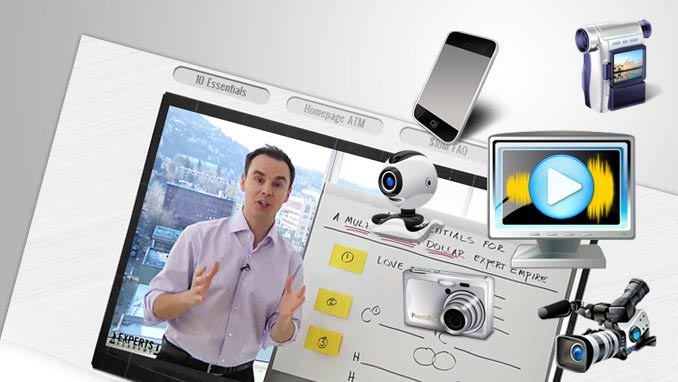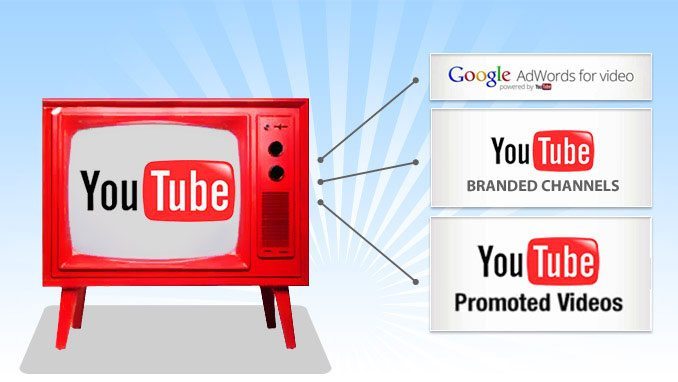


Twitter Tips for your web presence
Twitter creates value because it can be used in many clever and innovative ways to serve many different purposes.
For a marketer, it’s just as important to understand the motivations behind why people use Twitter as it is to understand how Twitter serves as a marketing tool. What makes people want to follow and be followed? Why have so many people reluctantly joined Twitter, only soon to become Twitter addicts (#twitteraddict)? In short, what makes Twitter users tick? Let’s take a closer look at some of the reasons why Twitterers use Twitter; understanding this will in turn help explain why Twitter continues to gain such widespread popularity.
Keeping in Touch
Twitter is great for socializing. You can socialize with friends, clients, customers, prospects, the media, and anyone else with whom you might regularly be in touch. A single tweet is broadcast to all of your followers at once, making it easy to let everyone know where you are and what you’re up to.
Making New Friends
Some people want to use Twitter strictly to find new friends and contacts with whom to cyber-socialize. Twitter’s low barriers to connecting make this especially easy.
Connecting with Like-Minded People
The majority of Twitter users are people looking to connect with others who have similar interests and discuss the latest news and trends in their circles. Enthusiasts of all types are connected through Twitter.
Voyeurism
Twitter is open system allows anyone – even non-Twitter users – to view whatever you tweet. Someone might want to keep an eye on another tweets goings-on without the other knowing it. Twitter makes this possible.
Event Planning
Twitter can be an easy way to organize an offline gathering of likeminded people. In fact, a TweetUp is Twitterese for “meet ups” in which a group of tweeps interested in meeting face-to-face plan to congregate at a determined time and place, usually associated with an existing event or subject matter and usually in an informal setting.
Activism
On Twitter, it’s easy to find and/or recruit people willing to support or work your cause, whether charitable, medical, environmental, or political.
Entertainment
There ís no shortage of entertainment on Twitter, whether it’s celebrities who tweet; bands updating their fans; comedians telling 140-character jokes; links to YouTube videos; sports scores; or otherwise fun, funny, or interesting people and entities using Twitter to amuse or be amused.
It is noteworthy that there are so many Twitter imposters posing as celebrities that Twitter had to create a verified accounts system that consists of a seal on a userís profile page once Twitter confirms that the user is who he/she/it claims to be. Currently, Twitterís Verified Accounts are offered only to high-profile individuals likely to have “impersonation problems or identity confusion” and not businesses. The only information Twitter currently offers about its verified accounts can be found here: http://twitter.com/help/verified. Twitter has hinted at selling Verified Accounts to businesses down the road, however, as a revenue stream.
Getting a Company’s Latest Tweets
Brands often use Twitter as a trumpet for news, developments, and promotions even before press releases or official blog posts. Many consumers like to follow the companies that matter to them and connect with brands on a more personal level.
Marketing and Business Development
Twitter is an invaluable tool for businesses of all sizes.In fact, Twitter’s level playing field gives small businesses and entrepreneurs an edge they can’t necessarily get otherwise. Customers and prospects get to know the face behind the company, which can be helpful in building a brand. Through Twitter, entrepreneurs don’t have to spend thousands to launch a new product or service, promote a marketing campaign, or drive traffic to their websites.
Monitoring Brands and Reputations
Most tweeps aren’t shy about speaking their minds, especially when it comes to things they like or dislike. Twitter makes it possible to monitor and measure what they’re saying about you or your brand in real time.
Keeping Up with the Latest News
News breaks often on Twitter, especially tech-related news originating from tweets by people within the industry. Some traditional media have begun using Twitter as an additional broadcast medium.
Simplicity
Twitter’s genesis sprung from the idea of serving as a status update tool, and at its most basic level, that’s what it still is. Although its usage has evolved well beyond the “What are you doing?” premise, Twitter’s simplicity makes answering the status question a common first activity for newcomers.
Short and Sweet
Although Twitter limits messages to a meager 140 characters, many would argue that this seemingly strict limitation is one of Twitter’s greatest strengths. Limited length means that every word counts. In an Internet age of information overload, most Twitter users relish in the brevity. Writing pithy yet informative tweets that convey the full value of your meaning is a skill.
Low Barriers to Entry
Twitter makes it easy to join: It’s free! Using the web-based version of Twitter is still 100 percent free, although users accessing Twitter via mobile SMS might incur standard text messaging rates and users who elect to use third-party Twitter management solutions might also have to pay for those.
Twitter knows very few divides. Anyone of any nationality, race, or gender, anywhere in the world, is welcome to create a Twitter account (or more than one). For the low price of your name and a valid email address, admission to the Twitterverse is granted. Email addresses are not validated, but using a false one prevents the user from being notified by Twitter about things such as new followers or direct messages.
Account Creation
Talk about simplicity; Twitter’s three-step account-creation process couldn’t be easier. First you must create a username and password; enter your email address to find contacts; and start following people.
Users are encouraged to share their real names, but doing so is not required. Twitter user profiles can be completed and customized, but they do not have to be to allow someone to use Twitter. Currently, there’s no user agreement to read and sign or email confirmation link to click. (Although there is no user agreement, Twitter does have Terms of Service, which you can find at http://twitter.com/tos.)
Just Start Typing
Once your account is created, you’re ready to start tweeting. You may simply tweet your status, or you may create a welcome tweet introducing yourself to the Twitterverse by telling a little about yourself and your reason(s) for joining Twitter. This is good practice for the art of pithy writing! You can also hang back and lurk a while. The term lurking has been around since the early days of the Internet, and it merely means to hang back, become familiar with the process and culture of the Internet channel you’re about to get involved with, and look a little before leaping. On Twitter, lurking is reading other people’s tweets before venturing out to post your own. The eager new user may seek the help of a willing friend who’s already on Twitter to act as an accomplice, introducing you to their tweeps. Most Twitter users are warm and welcoming of new users who acknowledge their “newbiness” although these same experienced users might be less tolerant of newcomers who don’t take time to learn or who intentionally ignore better tweetiquette, and some might even make a point of calling the offender out.
Find Friends
Twitter has several tools to help you find friends and start building your Twitterverse. If you find someone you want to follow, you do not need to send this person an invitation or even get their permission to start following them. Simply click the Follow button, and you will officially befriend this person.
When someone chooses to follow you on Twitter, Twitter sends you an email notification with the new follower’s name, handle, and their followers/following/update stats. This not only alerts you to the fact that you have a new follower, but you can also click on the link in the email to view this new user’s Twitter page.
Unlike other social communities, however, friending on Twitter is not a two-way arrangement. Following someone does not ensure that they are going to follow you, nor should you expect them to do so. Because Twitter has basically no barriers to friending, you will find yourself being followed by total strangers’ and because you don’t know these people, you may be reluctant to follow them. Some people have no problem with follower reciprocity and they might even use automated software to instantaneously follow you back; on the other hand, others are far more discriminatory about this practice. These latter types of Twitter users will usually visit your Twitter profile page to learn more about you and make their follow-back decision based on how follow-worthy they feel you are. Regardless, following someone back is just as easy: all anyone has to do is click the Follow button, and they’ll become a new follower.
Ease of Use
Twitter’s simplicity doesn’t stop once you’ve gotten started. Twitter’s clean interface and easy-to-understand activities make it incredibly accessible to anyone. Because, in theory, there are very few technical things you can do directly on Twitter, it has left little room for functional error.
Straightforward Design
Twitter’s web interface is clean, attractive, and user-friendly, with little to detract from its purpose. You can really do only a handful of things on Twitter.com, and even listing them makes it all sound more complicated than it really is.
- Read tweets from your followers (your tweet stream).
- Mark a tweet as a Favorite.
- Send a message or reply to your followers.
- Read your direct messages.
- Send a direct message.
- View your followers.
- View who you’re following.
- View your tweets (you also have the option to delete your own tweets individually).
- View your favorites.
- Conduct a search (you can also save a search as an option).
- View your saved searches.
- View Trending Topics.
- Subscribe to your feed by RSS.
- Modify your profile.
- Change your settings.
- Find friends.
Simple Controls
Having such limited activity options reduces the room for confusion or error. For example, all of the View functions just require that someone click on the desired link. Twitter makes most of its links very easy to see – they’re just ordinary underlined blue links. Twitter is so easy, in fact, that newbies first trying to get oriented through third party tools commit more errors than those just using the simple Twitter interface, particularly when it involves responding.
Low Level of Commitment
People use Twitter for all kinds of reasons. In Twitter’s “Getting Started” Help section, there isn’t any stipulation about how often you have to use Twitter or for what purpose. As a result, Twitter meets people’s needs differently and, at its core, Twitter requires nothing of its users – not even active use. This low level of commitment has led to some criticism of Twitter. In April 2009 Nielsen Online claimed that 60 percent of Twitter users quit after their first month’s use, so Twitter is rising user counts might be misleading.
Does this matter to the marketer? Is this a trend that will continue or just a hiccup as people rushed to register for Twitter but then didn’t find value in it? Let’s remember how Twitter is being used.
Casual Conversations
Because of its casual atmosphere, Twitter has become the water cooler of the Web, a popular hangout where users pause to shoot the breeze, catch up on things they may have missed, and gossip with friends.
Easy Come, Easy Go
On Twitter, users can follow and unfollow people at will, with no real consequences. See someone tweet something interesting? Start following them and see what other cool things they might share. Don’t like what someone has to say? Make a clean break and unfollow them. Most users don’t take it personally.
Blogging, But Not
Twitter is an easy way to jump-start blogging without a whole lot of effort. Blogging takes a lot of work: bloggers not only have to come up with content ideas, but they have to find time to flesh out and write these ideas into actual blog entries. Twitter users, on the other hand, can share news, opinions, links, music, and more – all without even knowing how to start a blog, let alone having to write a lengthy blog post.
High Level of Control
For the small amount of commitment that Twitter requires, it offers a remarkably high level of individual user control. This is another feature that has led to its rise in popularity.
You Own Your Message
You are what you tweet. Other social networks generally summarize who you are with a one-shot profile and give you tools and features to embellish that profile with pictures, graphics, links, and so on. Twitter, however, has few distracting add-ons; it’s pretty much stripped down to a singular focus: your tweets. Twitter and the Twitter community of users place a high value on what you have to say; by primarily using only words, a user can increase the authority and influence he or she has within the community. Tweet interesting things, and gain followers. Tweet uninteresting things, and lose them. Don’t tweet much at all; don’t expect much in return. Twitter not only gives users total control over their messages, but also gives them the opportunity to wield clout in the community.
Interact with Who You Want, When You Want
Twitter puts you in the driver’s seat of who you interact with; whether that’s the act of following, replying, @ or direct messaging, or retweeting, Twitter allows you to do so at a pace that’s individually controlled. Certainly, the norms of twetiquette encourage reasonable response times; however, nothing dictates or even forces a user to respond in any particular timeframe.
This control is both very powerful and empowering. It also gives the user the ability to build a personalized network of people; that is, people selected by the user for the user’s own reasons. Advanced third-party tools and a soon-to-be launched feature on Twitter called Lists, further help the individual user by organizing this network of users in customized, meaningful ways
Block Unwanted Users
If you really don’t care for another Twitter user or suspect they’re a spammer, Twitter’s built-in block function enables you to silence them. They will be unable to send you tweets and blocked followers will not appear in your follower list. Additionally, blocked users will be unable to read your tweets in their Twitter stream. Blocking makes it appear as if you do not exist to each other.
Like everything else with Twitter, blocking someone is easy. You have first to identify the undesirable follower, and click the Block button and after that you can confirm the block.
Privacy Protections
Twitter has several built-in privacy protections that let users control who sees their tweets. By default, these protections are disabled. It’s easy to enable them, however, with Twitter’s simple Protect My Tweets checkbox in the Settings console.
Protected tweets mean that none of that user’s tweets appear on Twitter’s public timeline. Only users who are approved by the account owner can see the owner’s tweets.
Twitter also has a Delete My Account option (a rarity for most social networks) that will completely erase all traces of your Twitter profile and every tweet associated with it. This feature is not something most account holders know about or choose to use, but it’s comforting to know that it exists if needed. Remember, however, that even if you wipe out your Twitter identity and all your tweets, your tweets may have promulgated elsewhere in Twitter’s search engine or Google (both of which index tweets) or on other people’s websites or blogs. Watch those late-night drunken rants about your ex. Your tweets may live in infamy long after your Twitter account is gone. Always be mindful of what you’re saying!




